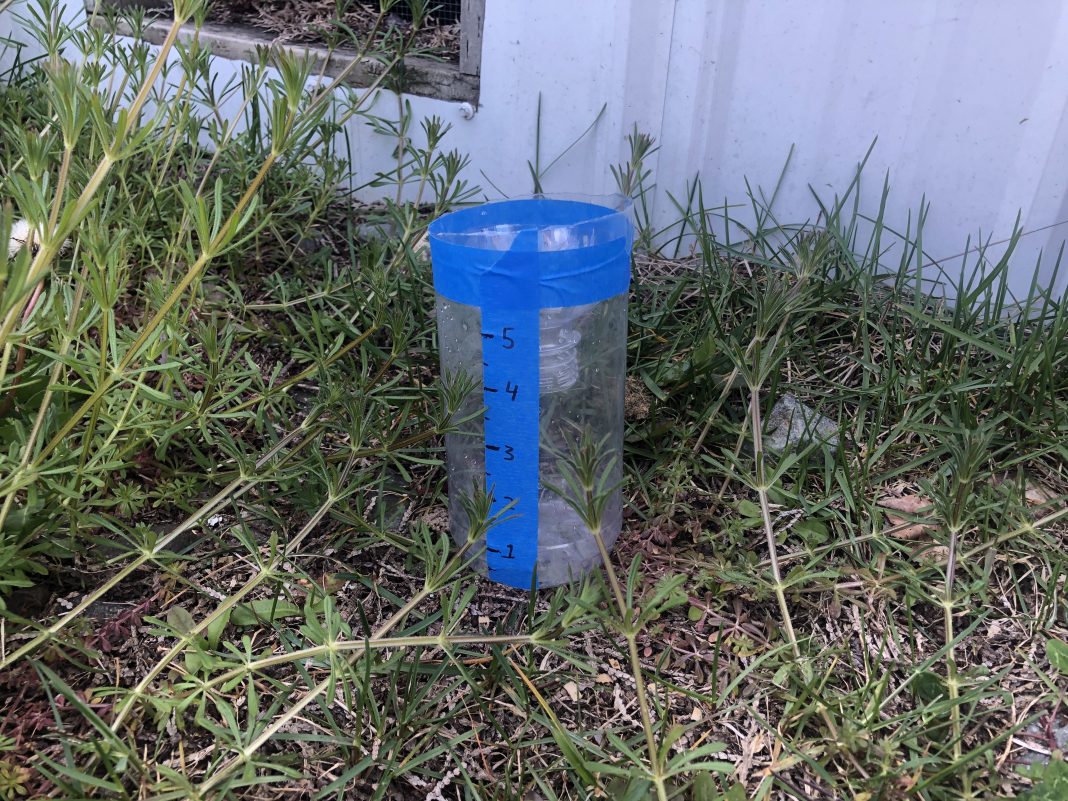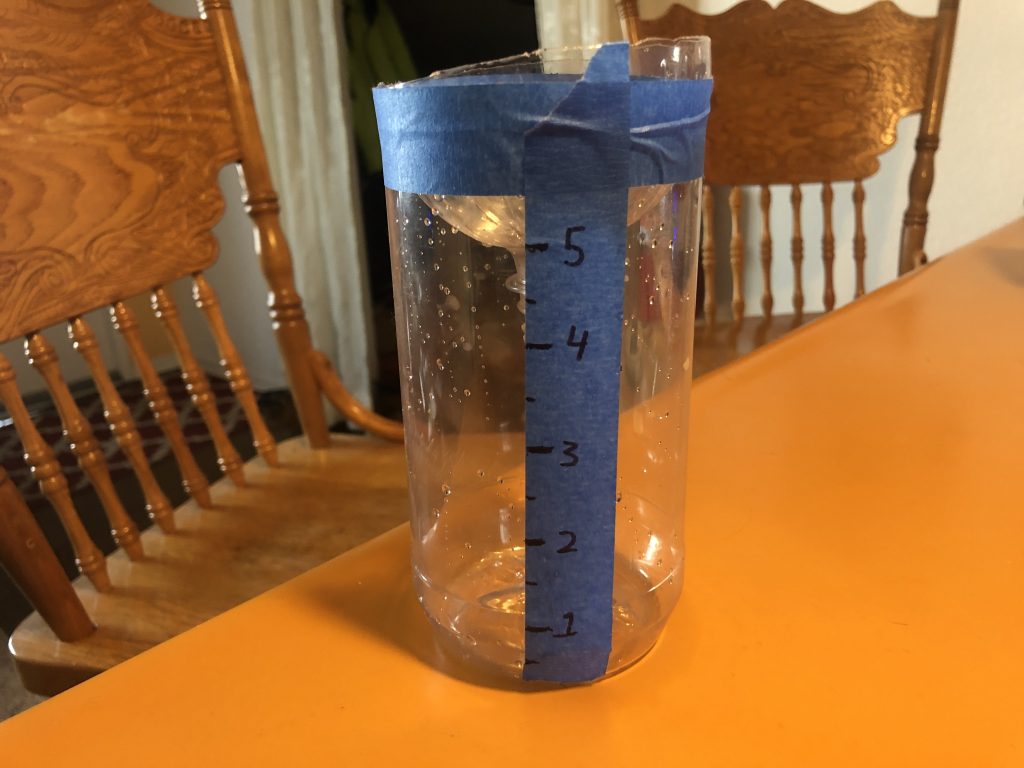Submitted by South Sound GREEN
In the face of COVID-19 and recent stay at home order, parents and guardians may find themselves looking for activities that not only keep students engaged, but also provides information about local environmental science and concerns. In our South Sound GREEN Home Based Science Project series, we will introduce and demonstrate various hands-on and at-home activities for children of all ages to do either indoors or outside!
 This time we are going to talk about how important rain is for our area and how to scientifically observe it!
This time we are going to talk about how important rain is for our area and how to scientifically observe it!
Rainy Day Research
Grade Level: K-5
Materials
- Plastic water bottle
- Scissors
- Tape
- Ruler
- Marker
- Plate
- Flour
Background
 If you live in Thurston County, then you’re very familiar with rain. In fact, our area gets about 50 inches of rain a year – about 12 inches more than the United States average. In our earlier Runoff Race article, we talked about where this water goes and how it moves once it lands on the ground. But what if we want to observe the rain itself?
If you live in Thurston County, then you’re very familiar with rain. In fact, our area gets about 50 inches of rain a year – about 12 inches more than the United States average. In our earlier Runoff Race article, we talked about where this water goes and how it moves once it lands on the ground. But what if we want to observe the rain itself?
All living things depend on rain – a farmer needs rain for their crops, a bird needs rain to provide water for drinking and bathing, and a tree needs rain to keep growing big and strong. Here, in Western Washington, humans, animals, and plants have grown accustomed to frequent rain. Our temperate rainforest biome allows for unique animals and plants to thrive, and some of these cannot be found in any other region on Earth. However, this means that if the amount of rain in a season changes unexpectedly, these same species may have trouble adapting or surviving.
In 2019, Thurston County experienced a drought – a period of time with extremely low rain levels. This not only endangered plants and animals, but humans were greatly affected as well. Less rain meant drier conditions, negatively impacting crops that needed wetter weather and increasing the risk of wildfires. In other parts of the country where drier conditions are normal, low-rain conditions may not have had such a big impact. But here in Western Washington where we are all used to higher levels of rain, it was a problem.
Unfortunately for our area, droughts in the summer are likely to become more common as our climate changes. Another effect of a changing climate may be wetter winters but less snowpack in the mountains. Similarly to how unexpectedly low rain levels can negatively impact us, unexpectedly high rain levels can do the same by increasing the likelihood of flooding and increasing stormwater runoff.
It is important for us as scientists to keep track of rain. Using rainfall observations to predict droughts or flooding events early can reduce overall damage to our residents and environment. We measure rainfall by how many inches of rain falls over a particular spot. How can we measure inches of rain accurately? We use a rain gauge!
Procedure:
- With adult supervision, use scissors to cut the top of a plastic water bottle off, just below the shoulder of the bottle. Turn the bottle top upside down and place back inside the bottle (so that it looks like a funnel). Tape around the “funnel” so it stays in place. This funnel will help catch rainwater without letting any disappear from evaporation!
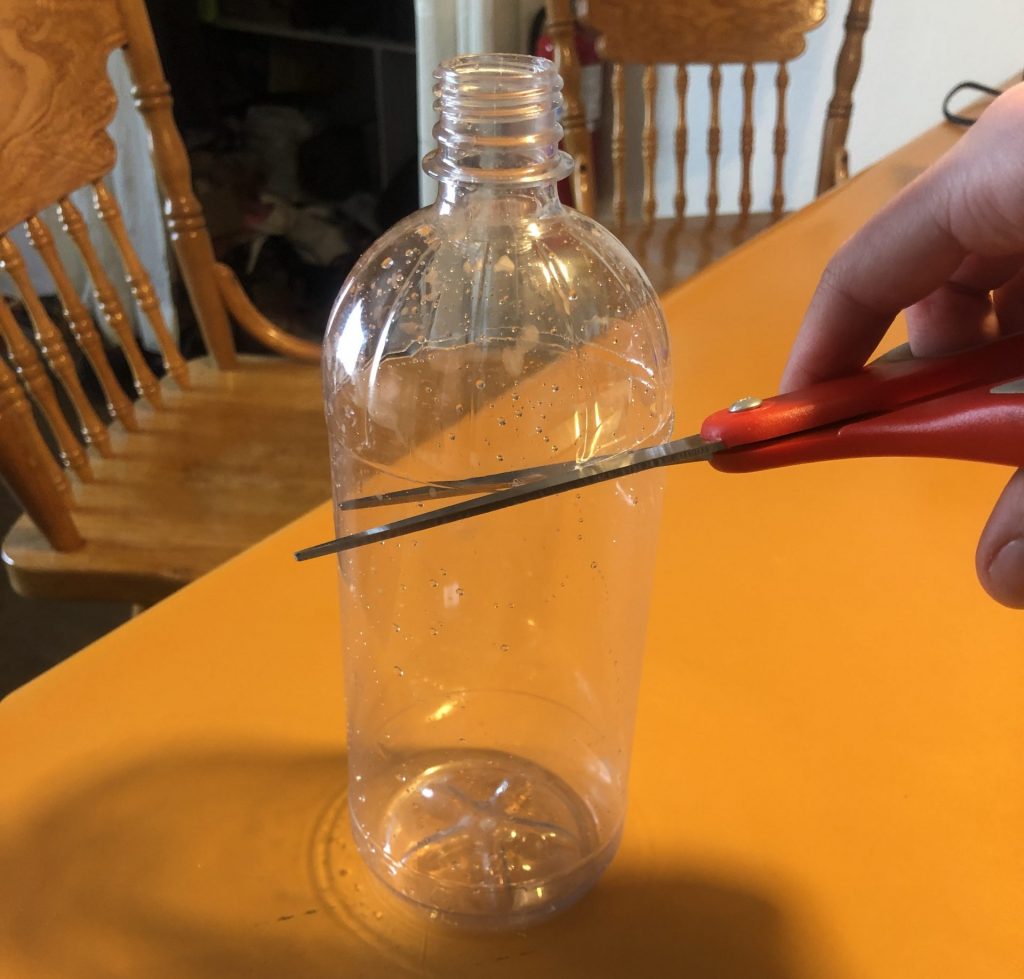
Cutting our rain gauge bottle into two pieces. Please be careful and use adult supervision! Photo credit: Sam Nadell - Take a piece of tape and place it vertically on the side of the bottle. Using a ruler and a marker, make marks at each inch marking and label them on your tape. Then fill in the half-inch markings as well.
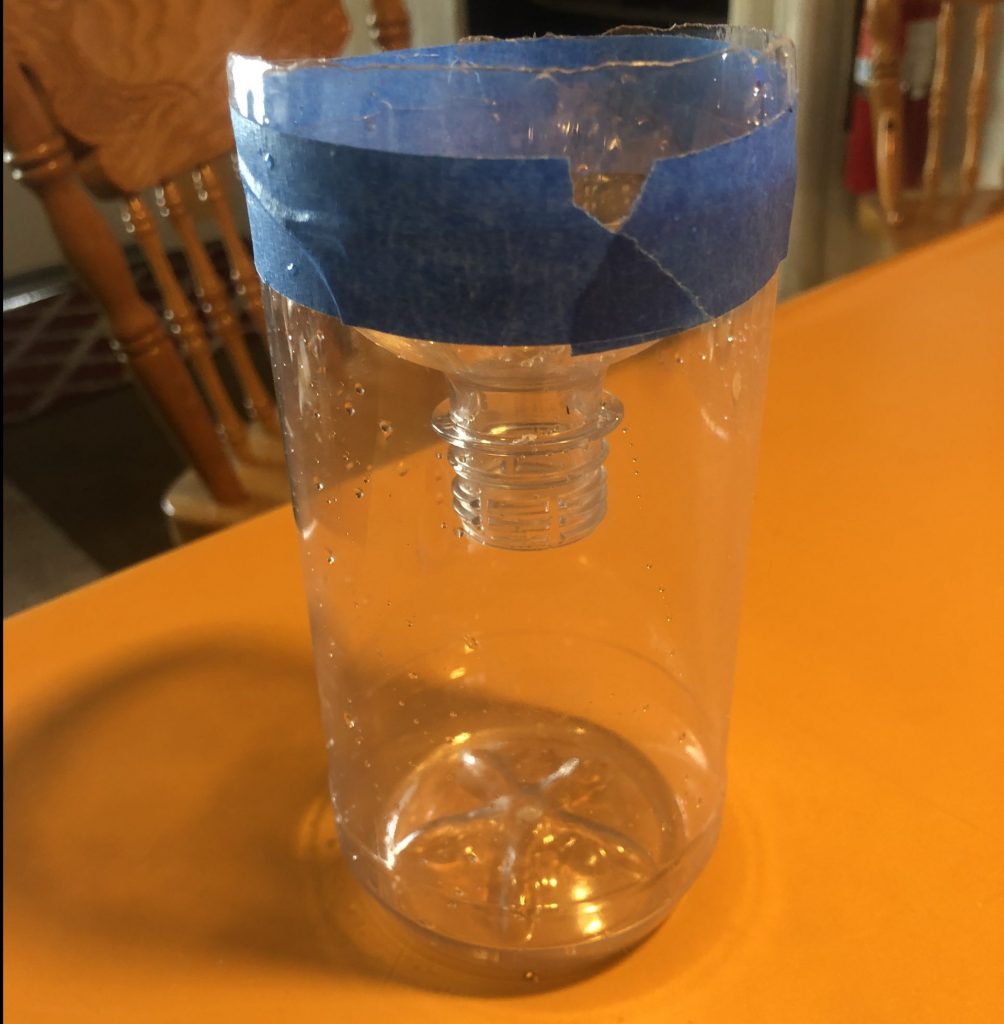
Starting to build the rain gauge. Here, the top of the bottle is cut off, inverted in the lower part of the bottle, and taped in place. Photo credit: Sam Nadell
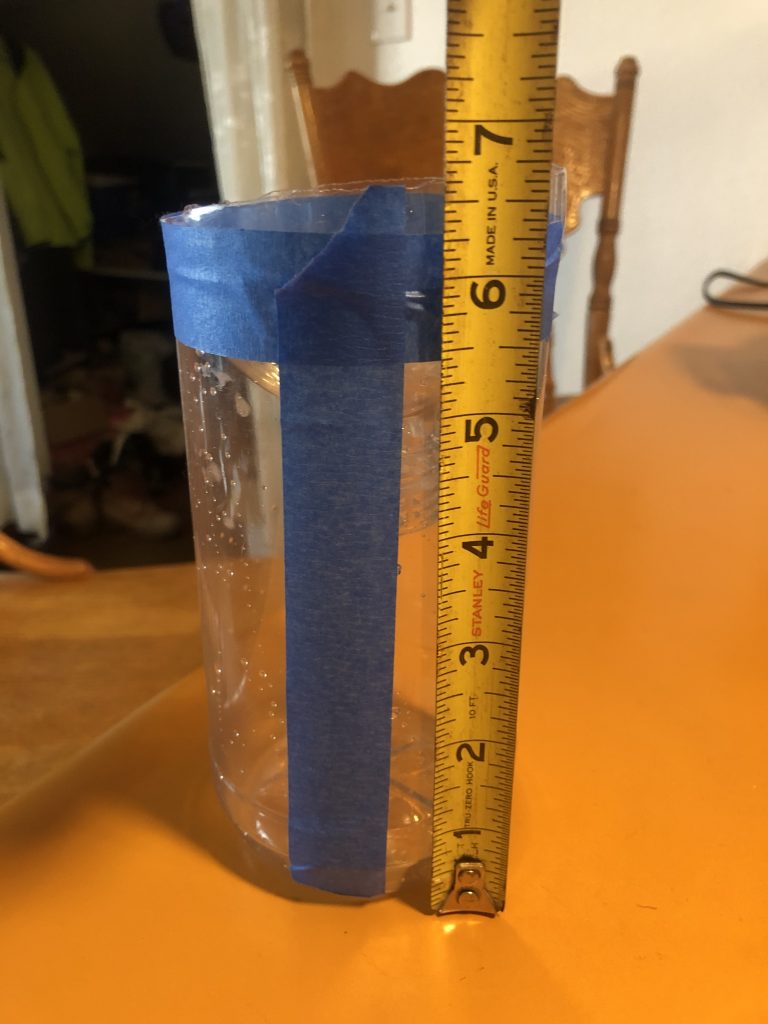
- Find a place with a level surface and no overhead coverage where you can place your rain gauge outside and it won’t be disturbed.
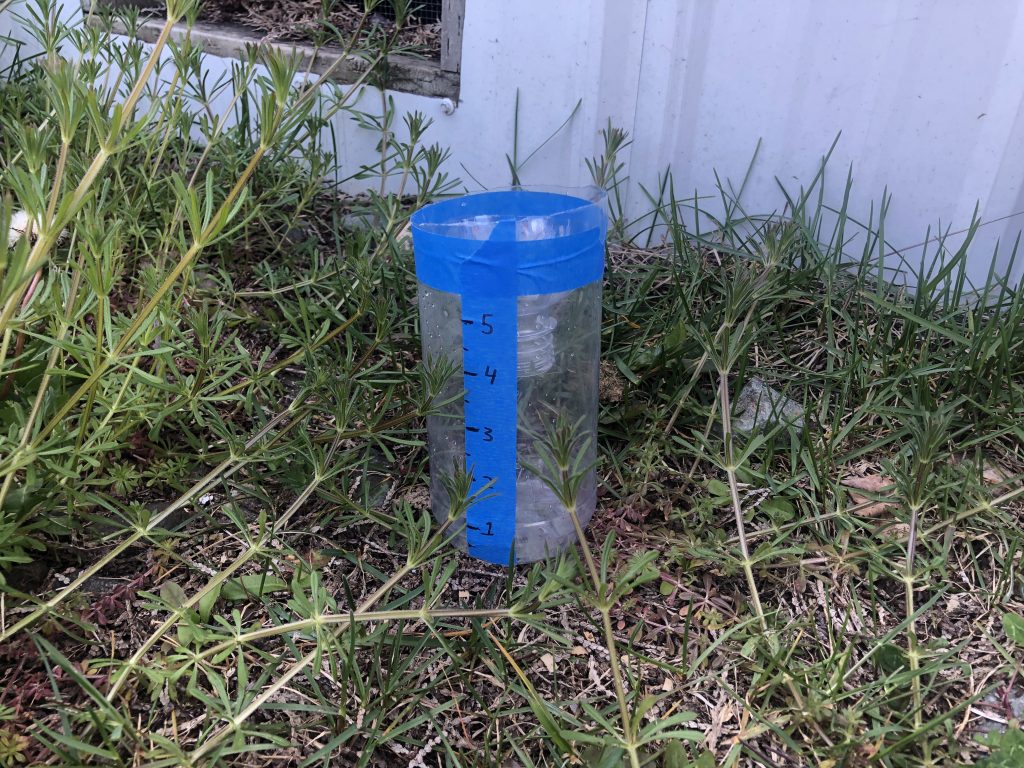
- Wait for a rainy day. When it starts raining, record the time.
- Go out and check your rain gauge every 15 minutes that it’s raining. Record the time and the rain level in inches.
- After it stops raining, record the time. Use the following formula (and a calculator) to calculate how much rain fell per hour in that storm:
(Inches of rain) x (60 minutes ÷ Duration of storm in minutes) = Rainfall per hour
For example, if it rains 2 inches in 30 minutes, our Rainfall per hour would equal 2x(60/30), or 2x(2), or 4 inches of rainfall per hour.
- Bonus activity: Did you know that raindrops come in all different sizes? To see the size of the raindrops in a storm, take a plate and cover it with a thin layer of flour. Keep the plate covered (with another plate or lid) and bring it outside in the rain. Uncover the plate for a few seconds to let the rain hit the flour. Cover the plate back up (don’t disturb the flour!) and head back inside. Look at the indentations left by the raindrops! Are they bigger or smaller than you expected? Are they all the same size?
- No rain? Test your experiments in the shower! How much rain comes out of your showerhead in a minute? Can you figure out how much water you normally use when you take a shower? How much water would be saved if you shortened your shower by a few minutes?
Vocabulary
- Biome: A community of plants and animals that all live in the same type of environment
- Drought: A period of time with extremely low rain levels
- Temperate Rainforest: A large forest that occurs wet, temperate (in between tropical and polar) environments
Keep Learning!
- You can use this website to find observed rainfall values for specific sites in our county!
- Find more rain gauge activities and details here!
- Use the NOAA Climate Explorer to see how this year’s rainfall compares to past averages, and see how our local climate might be impacted by different greenhouse gas emission scenarios.
- Sign up to be an official citizen scientist through NOAA’s CoCoRAHs program.
- Share your rain gauges with us on Instagram! Use the hashtag #GREENfromhome or find us at @southsoundgreen.
South Sound GREEN (Global Rivers Environmental Education Network) is a watershed education program in Thurston County that educates, empowers and connects thousands of local students in watershed studies annually. Through South Sound GREEN, participants engage in science and engineering practices related to water quality in South Sound. For more information, visit southsoundgreen.org.








































